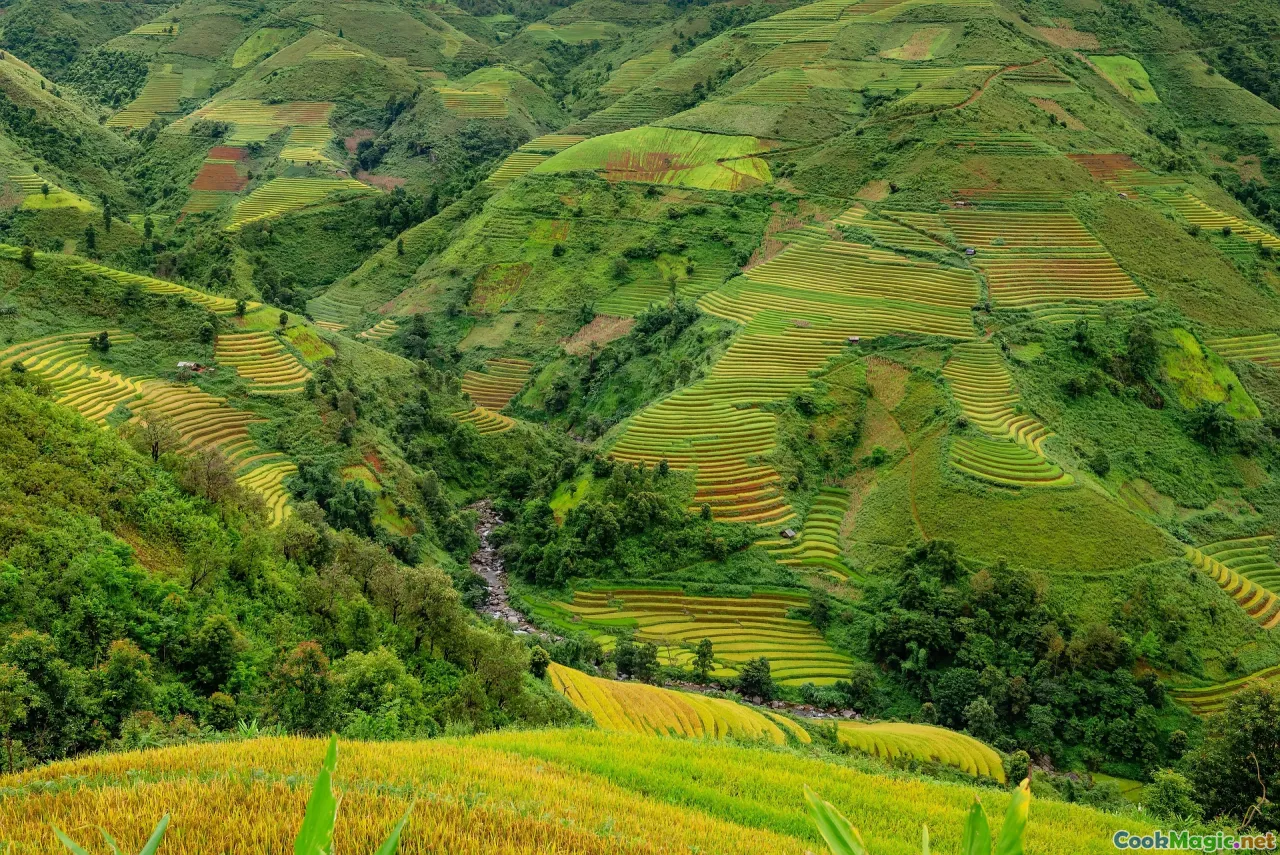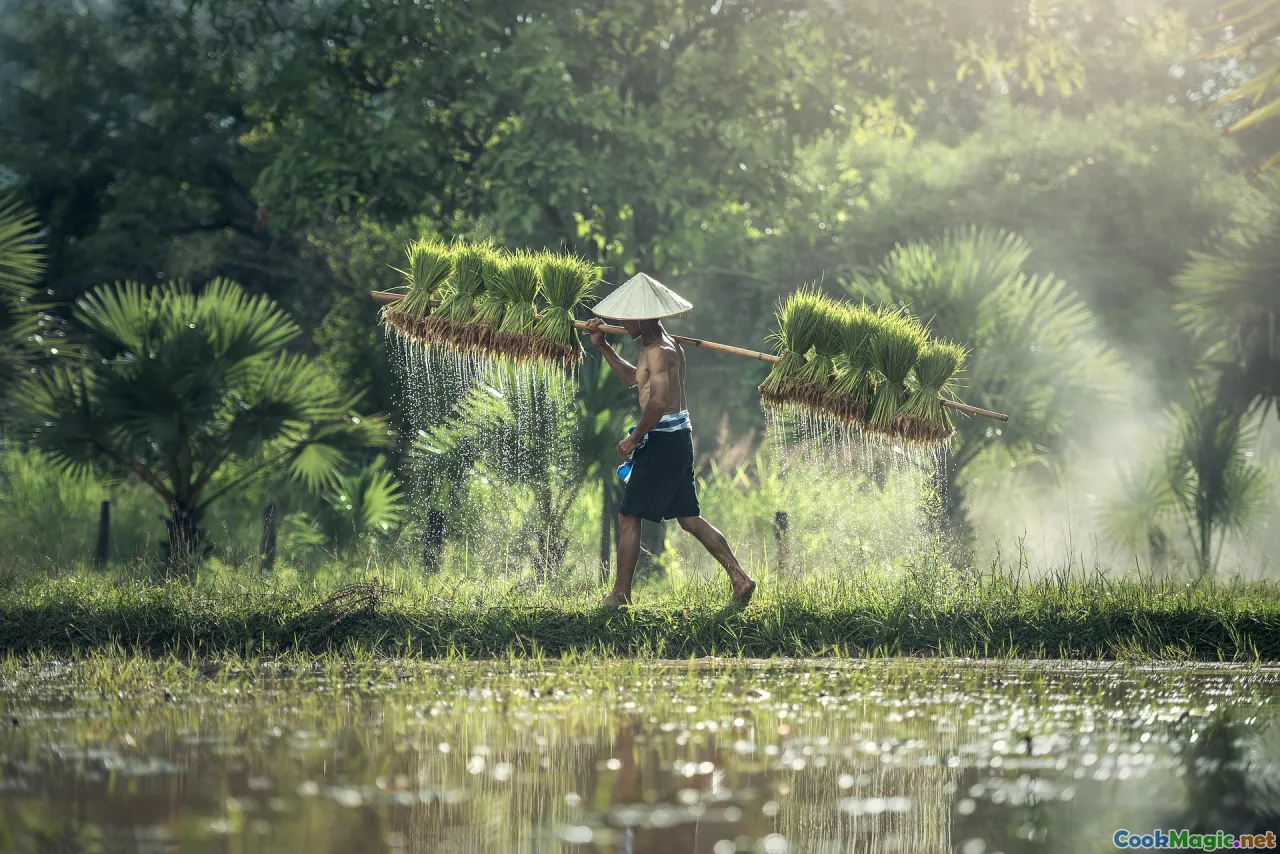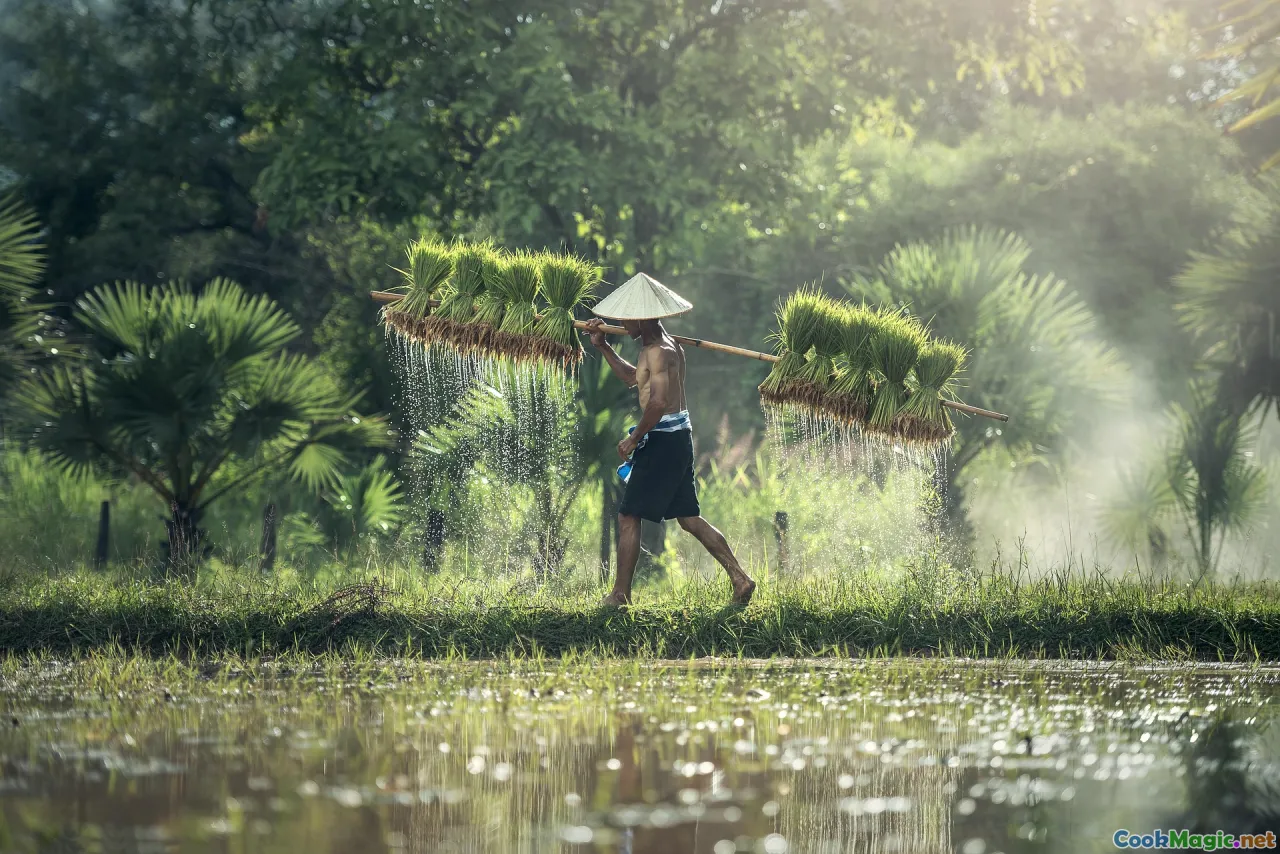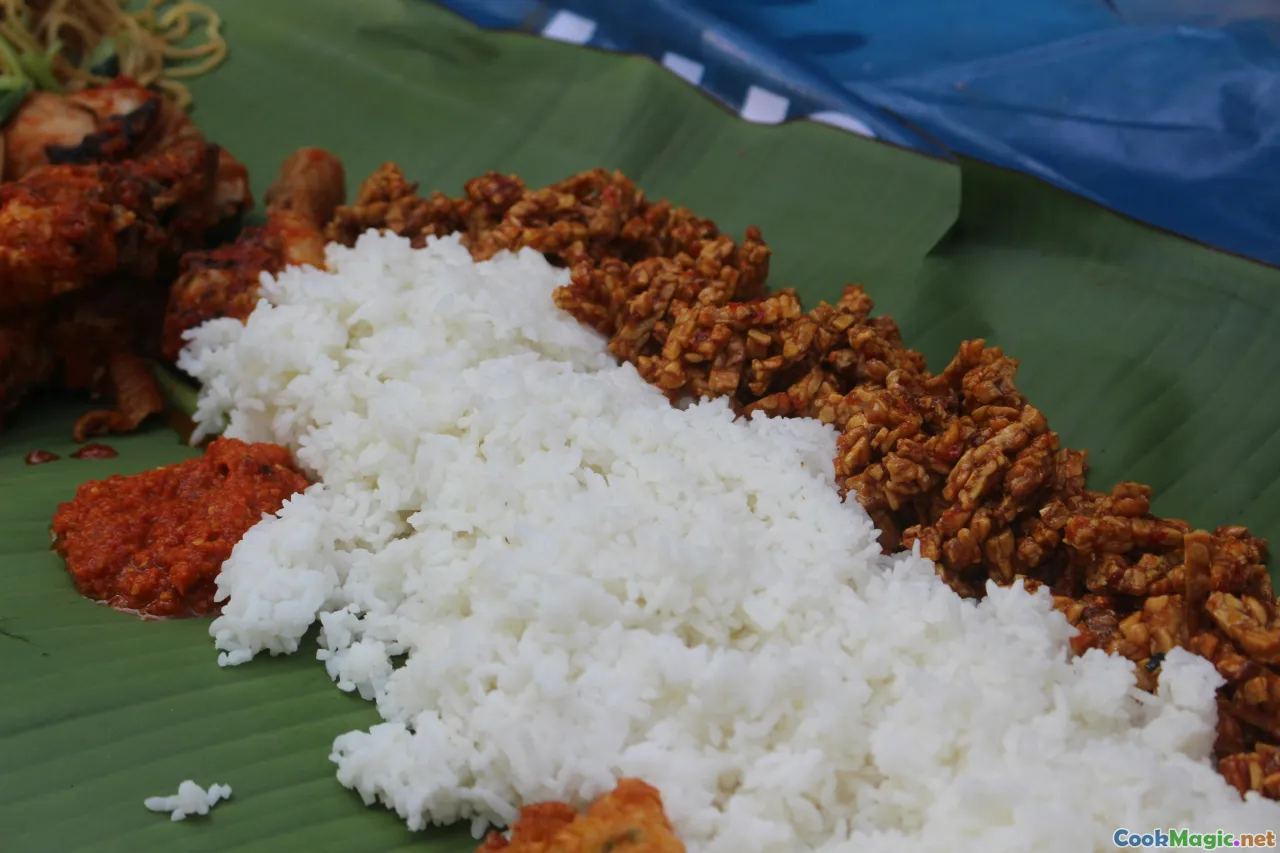A Guide to Malaysian Rice Types and Uses
11 min read Discover the diverse rice types in Malaysia and their best culinary applications, enhancing your authentic Malaysian cooking experience. July 14, 2025 15:05
A Guide to Malaysian Rice Types and Uses
Picture yourself wandering through the bustling streets of Kuala Lumpur at dawn, the air thick with the enticing aroma of sizzling spices and fragrant rice simmering in large steaming pots. Malaysia’s culinary tapestry is woven with the versatile and culturally rich grains of rice, which serve as the humble foundation for countless dishes. As a culinary enthusiast, understanding the nuances of Malaysian rice types unlocks a deeper appreciation for the flavors and traditions woven into every bite of nasi lemak, char kway teow, or satay accompaniments.
From aromatic fragrant rice varieties to sticky glutinous grains, Malaysian rice embodies the country’s diverse heritage, history, and palate preferences. Let’s embark on a flavorful journey exploring the different types of rice, their unique textures, best uses, and cultural significance.
The Heart of Malaysian Meals: An Overview of Rice in Culture and Cuisine

Rice (beras) isn’t just food in Malaysia—it’s a way of life, a cultural symbol woven into their festivals, daily routines, and family traditions. It’s the core of iconic dishes like nasi lemak, considered Malaysia’s unofficial national dish, and nasi dagang in the east coast, reflecting centuries of trading history and local agricultural practices.
Every grain resonates with stories of Malay, Chinese, Indian, and indigenous tribes’ culinary influences, each favoring specific rice varieties adapted to their cooking styles and taste preferences. Understanding these rice types reveals the intricate tapestry of Malaysia’s multicultural gastronomy.
Types of Malaysian Rice: Varieties, Characteristics, and Cultures

1. ** fragrant rice (Beras Aromatik / Basmati-like)**Often called fragrant rice, this grain is prized for its slender, elongated kernels and delectably aromatic scent reminiscent of jasmine or pandan. In Malaysia,Nasi Briyani and other festive dishes showcase this rice's fluffy yet separate texture.
Characteristics:
- Long, slender grains
- Naturally fragrant, with notes of pandan or jasmine
- Light, fluffy texture when cooked
Uses:
- Celebratory dishes like Nasi BerianiandNasi Minyak
- Congees and simple side dishes
Personal insight:
Malaysian fragrant rice often makes me think of vibrant banquets in kampung villages, where a cloud of aromatic rice accompanies tender curries.
2. Sticky rice / Glutinous rice (Pulut, Pulut Hitam)
This is the rice that glues itself together with a silky, almost melt-in-the-mouth texture. Its milky-white appearance and ability to cling to fillings or toppings make it special.
Characteristics:
- Short, plump grains that become sticky when cooked
- Slightly sweet, aromatic (especially Pulut Hitam)
- Chewy and cohesive texture
Uses:
- Traditional snacks like kuih (sticky rice cakes)
- Desserts such as Pulut Hitam pudding, served with sweet coconut milk
- Celebratory offerings and offerings in temple festivals
Personal insight:
I recall the aromatic sweetness of Pulut Hitam on festive mornings in Penang, where grandma’s gentle hand transforms rice into a sweet, fragrant indulgence.
3. Intermediate grains (Campuran)
A blend of fragrant and non-fragrant rice, used for everyday meals due to its balanced qualities.
Characteristics:
- Medium grain length
- Moderate aroma and stickiness
- Versatile
Uses:
- Daily rice bowls, such as Nasi Campur or simple steamed rice served with curries
4. Native and indigenous rice varieties (Padi Ladang & Padi Sawah)
Featured in rural Malaysia, these rice types often have distinct flavors and textures linked to local growing conditions.
Characteristics:
- May have distinct hues or sizes
- Rich earthy aroma
- Textural diversity depending on variety
Uses:
- Traditional dishes specific to certain Malaysian communities
Grains in Practice: How Malaysians Choose and Use Different Rices

The Art of Selection
Malaysian cooks select rice according to the dish they want to prepare and the occasion. For everyday meals, medium-starched Beras Putih (white rice) is the staple, cooked simply to fluffy perfection. For festive moments, fragrant rice varieties take center stage, body and aroma enhancing communal feasts.
Cooking Tips for Malaysian Rice
- Rinsing: Always wash rice thoroughly until water runs clear, removing excess starch and impurities.
- Water Ratio: Typically, a 1:1.5 (rice to water) ratio works for fluffy long-grain rice, while stickier varieties may require slightly more water.
- Resting: Let cooked rice sit covered for 10 minutes after steaming for optimal texture.
- **Flavor Additions:**Infuse aromatic rice with pandan leaves, turmeric, or coconut milk for extra flavor.
Custom Uses
- Nasi Lemak: Fluffy fragrant rice cooked with coconut milk and pandan leaves, serving as the bed for sambal, anchovies, peanuts, and boiled eggs.
- Nasi Kerabu: Bright blue rice stained with butterfly pea flower, served with fresh herbs and salted eggs.
- Nasi Dagang: Short-grain rice paired with spicy fish curry, typical in the east coast.
Regional Variations and Local Specialties

Penang and Perak
Nasi Kandar and Nasi Lemak often feature fragrant, long-grain rice expertly cooked to be moist yet fluffy. The humid coastal climate fosters rice varieties that carry a subtle aromatic profile, which perfectly complements spicy curries.
Kelantan and Terengganu
Here, rice is often served with Nasi Dagang, which blends glutinous short-grain rice with long-grain aromatic rice, delivering a unique texture and flavor that pairs beautifully with fish curry and pickles.
Sabah and Sarawak
In East Malaysia, Nasi Linut, a glue-like sticky rice steamed in banana leaves, is commonly used for traditional feast dishes during festivals and weddings.
Bringing Malaysian Rice Home: Tips for Enthusiasts

For those eager to bring a taste of Malaysia into their own kitchens, here are some tips:
- Source Authentic Varieties: Find reputable suppliers or Asian markets that stock fragrant and glutinous rice types.
- Storage: Keep rice in an airtight container in a cool, dry place to preserve aroma and avoid pests.
- Pair Wisely: Experiment with herbs, spices, and cooking methods to highlight each rice’s natural qualities.
- Cook with Intention: Recognize what dish you aim to create—sticky rice for desserts, fragrant rice for festive dishes—and select your rice accordingly.
Recommended Dishes to Try at Home
- Malaysian-style Curry Rice: Using fragrant rice as the base, serve with tender chicken or beef curry.
- Sweet Pulut: Prepare Pulut Hitam, then top with grated coconut and palm sugar for a satisfying dessert.
- Vegetarian Nasi Lemak: Substitute coconut milk with a splash of rich vegetable broth for a lighter version.
Celebrating Malaysian Rice: Personal Stories and Cultural Significance
Growing up in Kuala Lumpur, rice was more than sustenance—it was a symbol of gotong royong (communal effort) and family bonding. During festivals like Hari Raya or Chinese New Year, the entire household would come together steaming fragrant rice in giant pots, filling the house with a soul-stirring aroma that heralded celebration.
In rural Malaysia, farmers still wake early to tend their rice paddies, singing lullabies to the swaying stalks—each grain a testament to patience, labor, and reverence for the land. The rhythmic cadence of harvest season—padi panen—is etched into the cultural memory.
For the modern culinary explorer, embracing Malaysian rice and its various forms unlocks a web of stories, histories, and tastes that make each meal not just sustenance but a heartfelt tribute to Malaysia’s rich tapestry.
Dream of the fragrant aroma, the chewy texture, the bursting colors—Malaysian rice is more than grains; it’s a journey through a vibrant country’s soul. So next time you cook rice, remember, you’re not just preparing a side dish. You’re inviting centuries of tradition, celebration, and passion into your kitchen.









